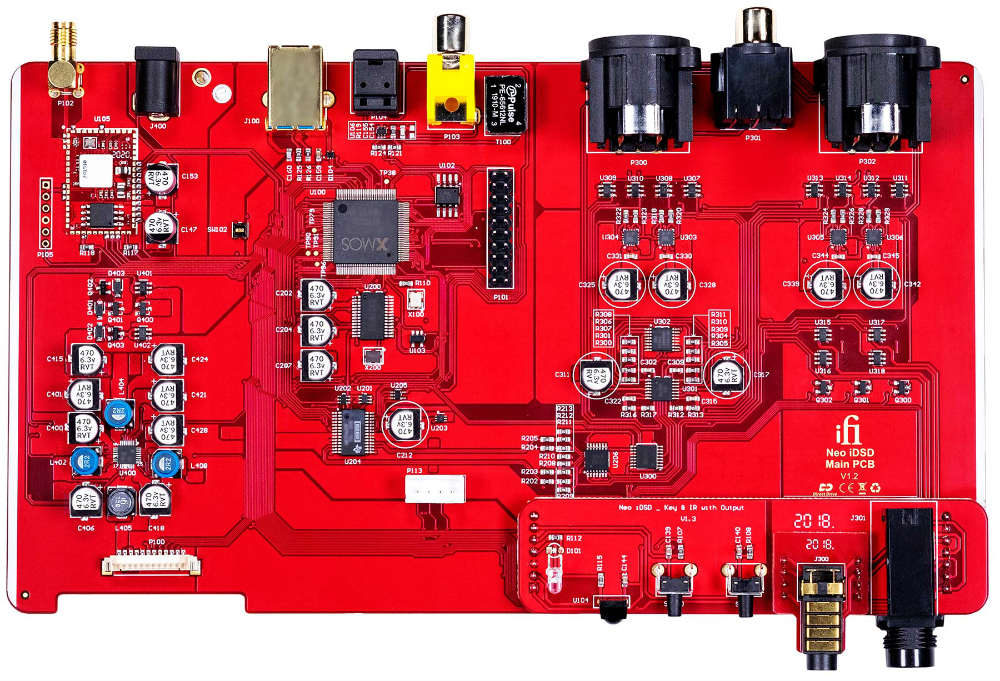Have you someone with you at AMR/iFi used HQPlayer?
Yes.
The developer showed many years ago on Computer Audiophile forum that the micro
iDSD measured better in numerous measurements when PCM44.1 was upsampled to DSD512
Well, "BETTER" is one of those "how long is a piece of string" things.
The iDSD micro also measures better if PCM44.1 is "upsampled" to DXD, which he did not show.
In both cases the main difference was the digital filter used.
And iFi products then became really popular with the HQPlayer world because it performed well and was very affordable
Did you ever catch wind of this discussion and see the measurements?
Yes.
Nobody at iFi minded that he promoted our products in the same posts where he promoted his software.
The upsampling engine is very flexible (too flexible?) and performs - well as expected from the settings.
Objectively speaking, the typical BB/TI "advanced segment" DAC, be they voltage or current output versions have the same basic core but used differently.
There are normally 66 unitary weighted current sources (unitary means they all have the same current). For PCM they are used as a 64 level (6 Bit) Thermometer DAC that works traditional for the 6 MSB (most significant bit's) and a 3rd order Delta Sigma Modulator at 128 * FS (typical, this can actually be configured via software for devices with software control) for the bit's below the 6 MSB.
As each of the 66 current sources may have a small error relatively to the nominal value, the actual current sources are selected randomly from the pool, for each of the bit clock cycles the internal logic selects the correct number of current sources (say 33 out of 66) but which actual current source is activated is selected randomly.
You might say that a 6 bit multi bit DAC (though not R2R) is used for the top 36 dB of the dynamic range while a single bit DAC with a single bit switch is used for the 77.....93dB of the dynamic Range. There is no other DAC range from other manufacturers currently around that works like this. The relevant Patent only expired recently and all other "hybrid" DAC's use a different approach.
In DSD mode the current sources are used to form instead a 8 cells long analogue FIR Filter with non unitary weights. This is a very similar structure to the discrete DIY DSD DAC the developer of HQPlayer published. The use of only 8 cells with non-unitary weights creates a different filter characteristic from Jussi's 32 cell unitary weighted analogue fir filter and better time domain behaviour.
Anyway, feeding the DAC Chip a 352.8kHz/32 Bit PCM Stream derived from 44.1kHz PCM uses a different process to create an analogue output from feeding it 44.1kHz PCM and sending it instead 22.5792MHz DSD uses still another process.
Certainly digital filters and modulators are different, with different result in the analogue domain, which I have reason to consider audible via a process that is not clear to me, other than that all processing is subtractive in nature and introduces deviations from the original signal. And where is a difference, there is often a preference.
In the iDSD Pro I basically constructed our own DSD -> PCM and PCM -> DSD engine using a FPGA (It can actually do a lot more than we have exposed to the user in the iDSD Pro) so I had control over the functions, filters etc. and selected what I felt to be likely to come closest to a "fair" DSD domain representation of the PCM. With this objective measured differences were minimised. I also designed the analog stages to compensate the 6dB gain loss of DSD.
I found that in listening I preferred the DSD512 rendering to DSD1024 and to any of the PCM Modes, in all cases using the "no digital filter" filter option.
Thor


 audiophilestyle.com
audiophilestyle.com
